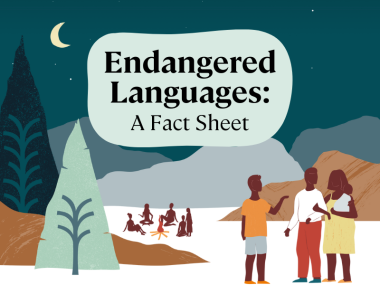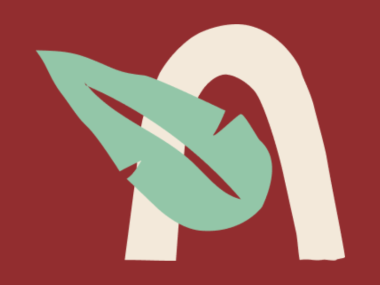Excerpts from an interview with Pius Akumbu on Mother Tongue Medium education & starting a school from the ground up: Some considerations
Developing curriculum, materials, and training teachers to start a Mother Tongue-based multilingual school
These things are all related -- starting the school, developing curriculum, and training teachers. They are all related. We separate them when we talk [about them]… but it's basically talking about all three, [in] the idea of starting a mother tongue-based multilingual school.
So, first of all, the concept has to be developed clearly. What exactly does one want to do?
The concept has to be developed fully, in the minds of the person or people or organization that want to start this kind of mother tongue-based multilingual or bilingual education or school. One has to decide specifically, what the goals are. What exactly is the goal of this medium of education?
So, when I conceived of this, I thought of it as…the teaching has to be done initially in the local language. So that children will have the opportunity to begin learning in their first language, in their mother tongue, while other languages are taught to them as a subject in school. And eventually there can be a switch to some other language of instruction. (In Cameroon, for example, the official languages of instruction are English and French and official examinations are in one of those languages depending on the region of the country. Therefore, children have to switch to English or French medium education at some point and integrate into the mainstream national system.)
So, the concept then requires community sensitization -- if children have been learning in a different language, now you're thinking [that] children of that community have to begin learning in their own language. The community needs to be sensitized on this. So, both the children, and especially the parents, need to understand the concept, which in many cases is not very reasonable to people -- why they have to learn in their original language. So a lot of sensitization is required to convince people – [that] beginning to learn in a language one understands will help them to learn better and faster.
And then they will eventually be able to transition to learning in another language, and it will even make things easier. Because once the foundation of learning is built, then learning experiences can be transferred, and learning will be better and faster.
So once the community understands the concept, and accepts it -- because they have to accept it -- then one normally has to think of, where does the funding come from? Where does the funding come from? It can be funded by individuals, it can be funded by organizations…the community may contribute in their own way, maybe they can contribute whatever they can. But I think in many cases, the communities can only contribute something like labor when it comes to maybe construction of a school. So the funding is really a crucial issue. Because if it is individually funded, like in the case of Babanki School, it's not that easy. So funding is crucial. Because if there is not enough funding, then of course the project cannot take off. And also for these kinds of projects to get funding from elsewhere, it's also difficult, because if you're asking for an organization to provide funding…most organizations think of their interest in the project. And when it is for the development of little-known languages and cultures, organizations that fund this kind of project are really limited [in this field]. And so it's usually difficult. In the case of Babanki School, I have not been able to find any organization that is willing to fund [it]… maybe I have not just done the right thing. So, one may have to, of course, have a good project, a good proposal that, you know, that can convince the funder to build the school and to provide the necessary materials for the school that are needed to run.
As I said, if the funding, if there is at least some funding and the work [can] be done, one way to be convinced that one has community support…can be seen through community participation in the project. When I was building the Babanki School, a few people would come around and assist in the work, which of course [says] they had a stake, and want the school to be built, because that says they will eventually send their children there. So, community participation and contribution is important.
And once the structure is built, once one successfully builds the structure, that is just one part of it.
The other significant part then becomes the materials development, literacy material development, teaching materials. And that is where I think the curriculum development comes in. I think in the case of Babanki School, curriculum development [and] teacher training, were kind of together. Because curriculum development…an individual can do this, but if many people are involved, it goes better and easier. So if teachers… are trained, or if other people who are interested and are trained to work on this together, that would really be nice.
So, I think teacher training should come first. Then the teachers together can develop the curriculum. So, training teachers to teach in a language that is under-resourced, that is probably not well developed, that lacks literacy materials, training teachers to teach in this kind of language can really be an uphill task.
What I tried to do was to work with people who already had some training to teach in English, in a major language, and who were also speakers of the language -- so they had some training, but were not employed, and so they were available. They already had some basics [in] teaching. Otherwise in general, it's not always easy that one can find people who already have some training [in] teaching. In that case, everything has to go, really, from scratch.
And so it will require…because teacher training is...not something you do in a seminar or something -- to actually train someone to teach in a little learned language is an uphill task. Because teacher training is a whole process that takes several years to do.
But in a program like this, if it's possible to do a crash intensive course, which actually, my focus was to get people to understand...that...we're using a competency-based approach to teaching…so, basically helping people to understand that learners come with knowledge into the learning space. They come with some previous knowledge that they have. And then the teacher should do their best to build on that knowledge.
And then following, adopting a learner-centered approach. So, a teacher should be someone who basically guides learning, not someone who teaches, but who guides the learning…who guides the learner to develop the knowledge they already have -- to develop skills, creative thinking skills, so that they can develop the interest in exploring and discovering things and to develop interest in learning.
So, I just tried to pass on this knowledge to people who were interested in teaching. And then together, we thought okay, what do we do?
We need a guide, we need a curriculum guide for this. And then there were two essential things that we had in mind: one must have in mind that developing a curriculum is basically preparing for teaching. So, deciding upon goals. Deciding upon what emphasis will be made in determining the content, therefore. Selecting learning resources, classroom procedures, thinking of how progress will be evaluated, and already designing follow up steps to learning at this stage.
And then there are two main things one must take into consideration if you think of developing curriculum. So you must think of the: learning experiences that need to be selected...and then selecting content. When it comes to curriculum development, [you must think about] what learning experiences should be selected and what content is needed for learning.
So this is something once there are a number of people who are ready to put together these learning experiences and the content...then the curriculum can then be built.
Maybe I can just tell you a little bit more about…the focus of learning is the learner… what guides the selection of learner experiences, what guides the selection of content...and talk a little bit about an example of something we developed for the Babanki School.
So, about learner experiences, the first thing that one must have in mind is about their validity. So, to settle on a learning experience to be…included. Because one has to think of validity – any experience one chooses to encourage learners to develop, one must think that such an experience must be relevant to the goals, the goals of the curriculum. So, you set goals and then select activities that are relevant to meeting the goals.
Then one must think of things that are relevant to life for the learners. So, they should be related to the learners’ real life situations...in and out of school. So, whatever experiences, they should be related to the learners’ real life situations.
So, instead of thinking of things that you know are quite foreign to the learner, once you think of experiences that are related to them as real life situations, then one must integrate experiences with variety. So, in order to be able to cater for the needs of different types of learners, one has to provide different types of experiences and make allowance...think of different kinds of experiences, for variety.
And then they have to be suitable, suitable to the learners’ present state of learning…quite related to validity and relevance to [their] life, suitability. And experiences should all, even if they are different, they should all lead to the same goal and the goal, of course, [as] defined in the curriculum.
So, subsequent activities, subsequent experiences should build on earlier ones. And good experiences should be…if there is like an experience that can bring about multiple learning outcomes, then that is an excellent experience. So, in selecting, if there is an activity that can lead to multiple learning outcomes, that should be favored….
So, that is about experiences. But content, content itself, [and] selecting content to include in the curriculum. Of course, content should be related to the objectives. Every activity to be included as content, should be related to objectives.
It should be...authentic. It should be significant. By significant, I'm thinking it should be able to lead to mastery or understanding of the subject matter. And it should lead to acquisition of new skills, of new knowledge. Especially that which is considered to be useful. It should be of interest to the learner. So one has to try to…put themselves and imagine activities and imagine content that is interesting to learners, or at least it should be made interesting to the learner.
Then in designing content, one must think of activities that, given the present level of the learner, they can be capable of coping with. They should be capable of learning the content, given their present level. And this is why materials are graded by, sometimes by age.
And then what I should say, content should be child-centered. So, good curriculum should be child- centered where learning activities are centered around the interests and needs of the child. It should be designed to motivate interest in the child in the learning process. So everything is about helping the child to grow intellectually, to develop creative thinking skills. Content should be of interest. And so, this way, when we're thinking of what to do that is culturally real to learners, which can encourage, which can facilitate learning, which can…help learners develop interest in learning -- this is the main thing: to get learners to develop interest in learning.
And of course, this depends on the sociocultural context where one finds themself. In oral societies like Babanki, where formal schooling is not part of the culture, one has to design content that motivates learning, encourages and helps learners to develop interest in learning.
So with this in mind, and also based on the fact that usually, a mother tongue-based program…like in the context of Cameroon, is not a separate program in itself, but it's a program that has to eventually fit in the mainstream system, the mainstream system that is run by the government. Because at the end of the 5, 6, 7 years in school, the children have to take a common exam with others in the rest of the country, which then has to allow access for them to go on to secondary education. So, the curriculum has to take into consideration the mainstream curriculum.
And so, in our case, we had to do translation of parts of the curriculum. And eventually then…once these things are put in place, once the school has been built, once the teachers have been prepared to teach, they have received some form of training to teach and the materials for teaching have been put in place, then the teaching itself, the implementation process now has to come in. And one thing I think one needs to have in mind -- a good curriculum would have shown the objectives and the outcomes which would then be helpful when it comes to evaluation.
So evaluation and improvement -- because to be successful, especially in something that is starting from scratch, one has to do evaluation on a regular basis, and then see what is not working and improve on it, see what is working, and consolidate. And that is that is why developing objectives and outcomes at the beginning is very important. So you can use this for evaluation. And as one evaluates, then improvement will follow.
As you know, unfortunately, in the case of Babanki, we didn’t get a chance to do any of these things [evaluation and improvement] because of the war that prevented our school from functioning as planned. So I cannot talk about….there’s no experience [about evaluation and improvement] there to share. We aren’t able to implement fully, and be able to evaluate. So at this stage, I hope in the future, we will still get to. But once the objectives are clearly stated, then evaluation will help to see if those objectives are met. And then to see how to improve.
About Dr. Pius Akumbu
Pius Akumbu is an internationally recognized teacher and scholar of Bantu and Grassfields languages, a linguist working with multiple endangered languages of Cameroon, while being involved in documenting and revitalizing his own Babanki language. He has also contributed to the debate on language planning and policy in Africa. In his quest for the promotion of mother-tongue based multilingual education he has argued strongly for the use of mother tongues as languages of instruction when children begin school, since these are the languages with which they are familiar at that point. Akumbu and Chiatoh (2014) and Akumbu (2018) illustrate that introducing children to formal education in their first language ensures that they learn better and faster even when a switch is made to a different language of instruction. He has also produced numerous literary and literacy materials in the language. He is trained as a teacher, developing curriculum and literacy materials for use in a school that he built from the ground up -- a school where children would not have to go through being taught in a foreign tongue, where they are able to learn in their mother tongue, the Babanki language. To open this school, he also trained teachers (L1 Babanki speakers) to read and write in their language. His main areas of research are phonology (especially tone systems), documentation and description of African languages, and languages in education policy in Africa. He received his PhD in Linguistics from the University of Yaounde 1, Cameroon in 2007 and has taught or been a visiting fellow in the United States, Germany and Japan.



